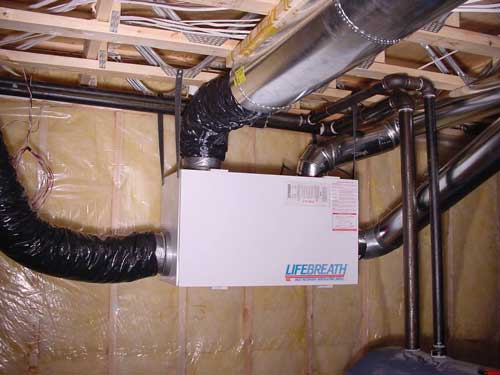What settings should I adjust my new heat recovery ventilator (HRV) to? I had a unit installed in my tightly constructed new house, but I find that running it continuously at low or medium makes the house too dry. The manufacturer won’t provide direction.
I know from 20 years of living with an HRV, and advising people who’ve had them installed, that ventilation management is an art, not a science. The reason why you can’t get the numbers you’re looking for is that each home situation is unique in several ways. Even brand new homes vary wildly in how air tight they actually are, occupants
 release different levels of moisture into the air depending on their lifestyle, and individuals have different ideas about how dry is too dry when it comes to indoor humidity during winter. Then there’s the issue of how varying outdoor temperature affects the development of condensation on windows.
release different levels of moisture into the air depending on their lifestyle, and individuals have different ideas about how dry is too dry when it comes to indoor humidity during winter. Then there’s the issue of how varying outdoor temperature affects the development of condensation on windows.
I recommend that you become your own expert on what constitutes proper HRV settings for your home. The approach we use at our house dials in a level of ventilation that’s just barely enough to eliminate window condensation, without making the house so dry that it hurts. In our case the routine we’ve settled on is to run the HRV constantly at the lowest setting during the day, then switch it off completely at night. Like you, constant operation has proven to make the house too dry for comfort. We have a humidity meter in the house, but watching the windows and our noses and skin has proven to be a more accurate way to manage our HRV.


